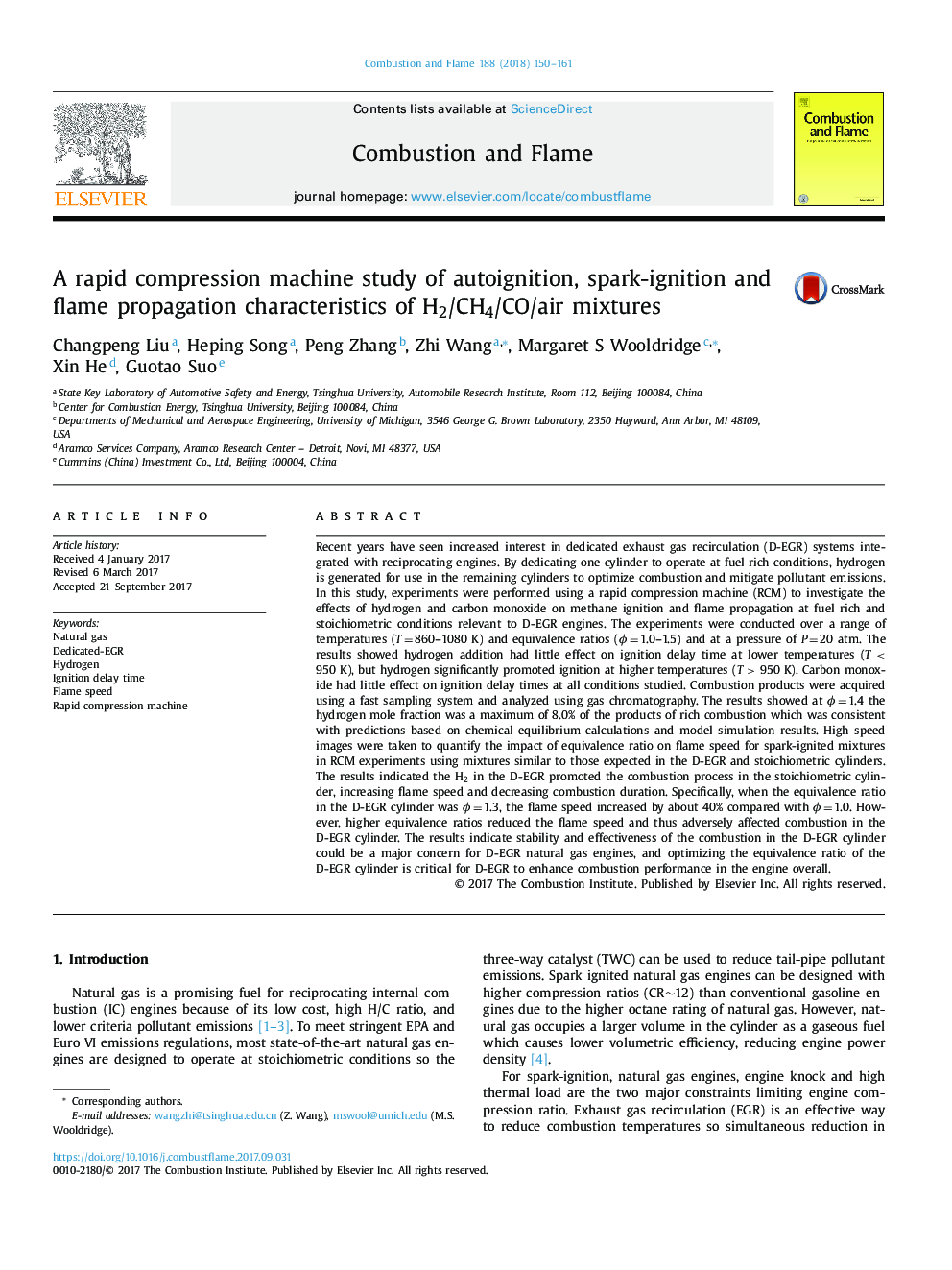| کد مقاله | کد نشریه | سال انتشار | مقاله انگلیسی | نسخه تمام متن |
|---|---|---|---|---|
| 4764338 | 1423549 | 2018 | 12 صفحه PDF | دانلود رایگان |
عنوان انگلیسی مقاله ISI
A rapid compression machine study of autoignition, spark-ignition and flame propagation characteristics of H2/CH4/CO/air mixtures
دانلود مقاله + سفارش ترجمه
دانلود مقاله ISI انگلیسی
رایگان برای ایرانیان
کلمات کلیدی
موضوعات مرتبط
مهندسی و علوم پایه
مهندسی شیمی
مهندسی شیمی (عمومی)
پیش نمایش صفحه اول مقاله

چکیده انگلیسی
Recent years have seen increased interest in dedicated exhaust gas recirculation (D-EGR) systems integrated with reciprocating engines. By dedicating one cylinder to operate at fuel rich conditions, hydrogen is generated for use in the remaining cylinders to optimize combustion and mitigate pollutant emissions. In this study, experiments were performed using a rapid compression machine (RCM) to investigate the effects of hydrogen and carbon monoxide on methane ignition and flame propagation at fuel rich and stoichiometric conditions relevant to D-EGR engines. The experiments were conducted over a range of temperatures (Tâ¯=â¯860-1080 K) and equivalence ratios (Ïâ¯=â¯1.0-1.5) and at a pressure of Pâ¯=â¯20 atm. The results showed hydrogen addition had little effect on ignition delay time at lower temperatures (T < 950 K), but hydrogen significantly promoted ignition at higher temperatures (T > 950 K). Carbon monoxide had little effect on ignition delay times at all conditions studied. Combustion products were acquired using a fast sampling system and analyzed using gas chromatography. The results showed at Ïâ¯=â¯1.4 the hydrogen mole fraction was a maximum of 8.0% of the products of rich combustion which was consistent with predictions based on chemical equilibrium calculations and model simulation results. High speed images were taken to quantify the impact of equivalence ratio on flame speed for spark-ignited mixtures in RCM experiments using mixtures similar to those expected in the D-EGR and stoichiometric cylinders. The results indicated the H2 in the D-EGR promoted the combustion process in the stoichiometric cylinder, increasing flame speed and decreasing combustion duration. Specifically, when the equivalence ratio in the D-EGR cylinder was Ïâ¯=â¯1.3, the flame speed increased by about 40% compared with Ïâ¯=â¯1.0. However, higher equivalence ratios reduced the flame speed and thus adversely affected combustion in the D-EGR cylinder. The results indicate stability and effectiveness of the combustion in the D-EGR cylinder could be a major concern for D-EGR natural gas engines, and optimizing the equivalence ratio of the D-EGR cylinder is critical for D-EGR to enhance combustion performance in the engine overall.
ناشر
Database: Elsevier - ScienceDirect (ساینس دایرکت)
Journal: Combustion and Flame - Volume 188, February 2018, Pages 150-161
Journal: Combustion and Flame - Volume 188, February 2018, Pages 150-161
نویسندگان
Liu Changpeng, Song Heping, Zhang Peng, Wang Zhi, Margaret S Wooldridge, Xin He, Suo Guotao,